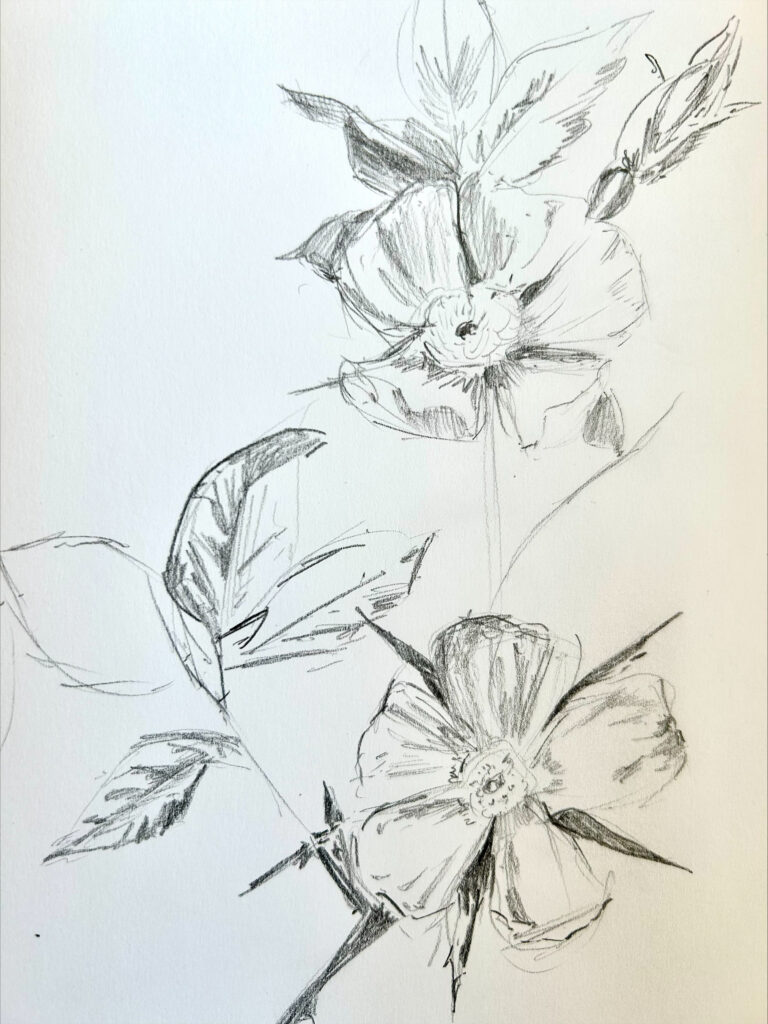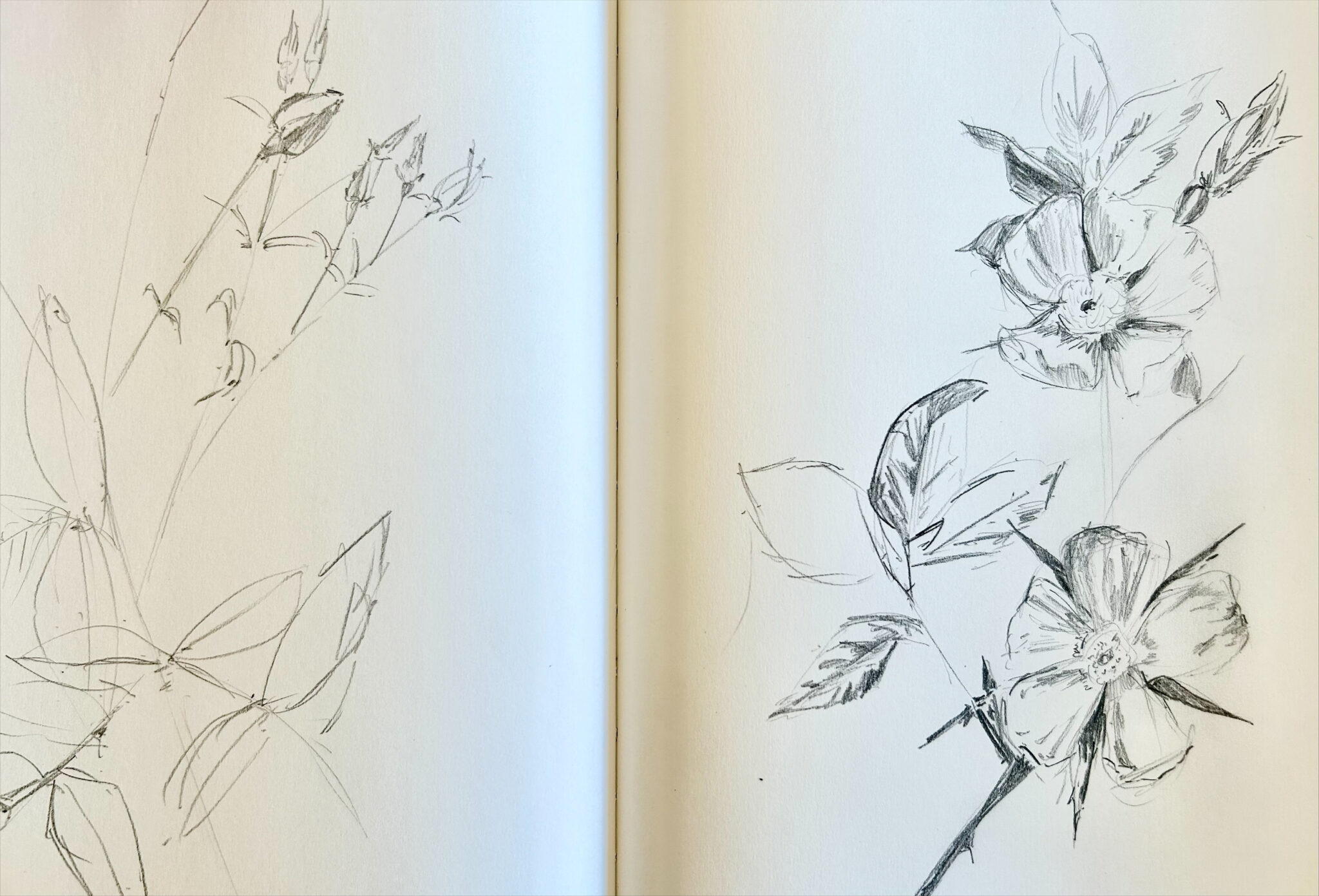
We all struggle now and then. It’s a fact of life. One way to help yourself find peace and happiness is to embrace your creative side—and one great way to do that is in our monthly Drawing in the Garden workshops.
“There’s a real value in taking time for yourself to do something enjoyable,” says course guide Erika Duque Scully. “It’s a wonderful meditative process.”
In fact, research shows that creating art can improve your mental health and reduce stress. “Research has found that making art can activate reward pathways in the brain, reduce stress, lower anxiety levels and improve mood,” reported Smithsonian Magazine.
| Register Now for Drawing in the Garden March 2 – Drawing in the Garden: Spring Buds April 6 – Drawing in the Garden: Cactus Garden May 4 – Drawing in the Garden: Four Seasons Garden |
You don’t have to be a brilliantly talented artist to benefit, according to psychiatrist Frank Clark in a recent interview with the American Medical Association (AMA):
I don’t think you have to be a Walt Whitman or a Picasso, so to speak, or a Monet, to be engaged in the benefits of art. Just a couple of minutes a day can be therapeutic for people. I equate it to exercise. We know that exercise, when we talk about physical fitness, is important for the body and the mind and the overall well-being. I think we have to look at something called, I would say, creative fitness, and how that also can impact us. So they say an apple a day keeps the doctor away. I would say maybe a poem a day or a writing exercise, whatever it may be, or just listening to music or singing or dancing, it’s good for the body and what’s good for the body is good for the mind.
The Garden regularly offers hands-on classes in Botanical Creative Arts, and one of the most popular and long-lasting programs is Drawing in the Garden. Local artist Scully has been joining students in the Garden once a month for drawing practice since 2021. She welcomes students at all levels to her class.
“You don’t have to have any kind of experience,” says Scully. “We have complete beginners sitting next to practiced artists. We all learn something every month.”

Classes run from 9 to 11 am on the first Saturday of the month, but the location changes every session to follow the seasons of the Garden.
Scully, who has an undergraduate degree from the Art Institute of Chicago and a master’s degree from TCU, sees herself as more of a guide than an instructor. “I’ll usually give them a quick exercise to loosen up, but it’s a very individual thing. I ask students what they want to focus on that day and help where I can. I’m very hands-on,” she says.
Students should plan to bring a drawing pad and a pencil. “It doesn’t have to be anything fancy. An ordinary mechanical pencil will do,” Scully says. If students prefer to work with other materials such as pens, markers or watercolors, they are welcome to do so.
Scully tells beginners the same thing she tells experienced artists: “Just put it down on paper,” she says. “Start looking for shapes and drawing what you see. Know that your first drawing isn’t going to be your best one. You don’t want to be precious about it.”
The key is to keep practicing, she says—one benefit of the regular monthly class. “Students get better every month. It’s wonderful to see the progress of returning students,” says Scully.
Another advantage of the monthly program is that the sessions are a regular opportunity to take time for yourself to discover the benefits of creativity. As psychiatrist Clark told the AMA:
I believe that we were created with the gift of creativity. All of us have the creative itch, so to speak. I just don’t think we have had the confidence to utilize that gift. … Again, you don’t have to be one of the luminaries in the field of poetry, or music or dance to explore your creative side. Just have fun with it.






